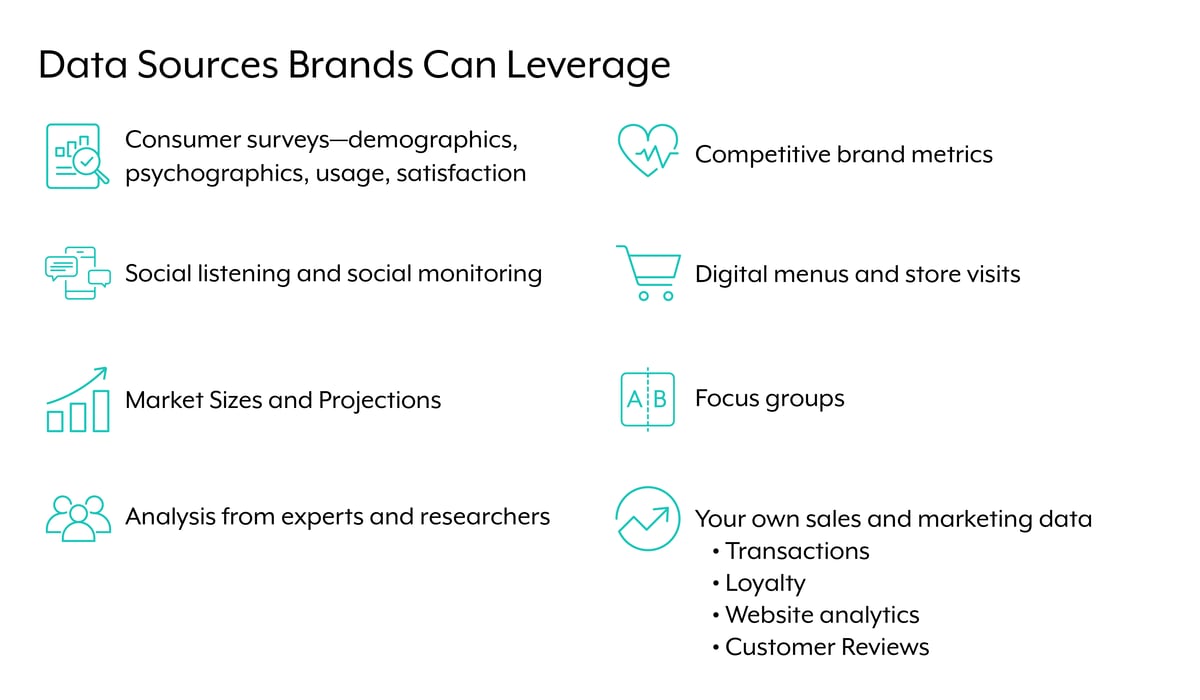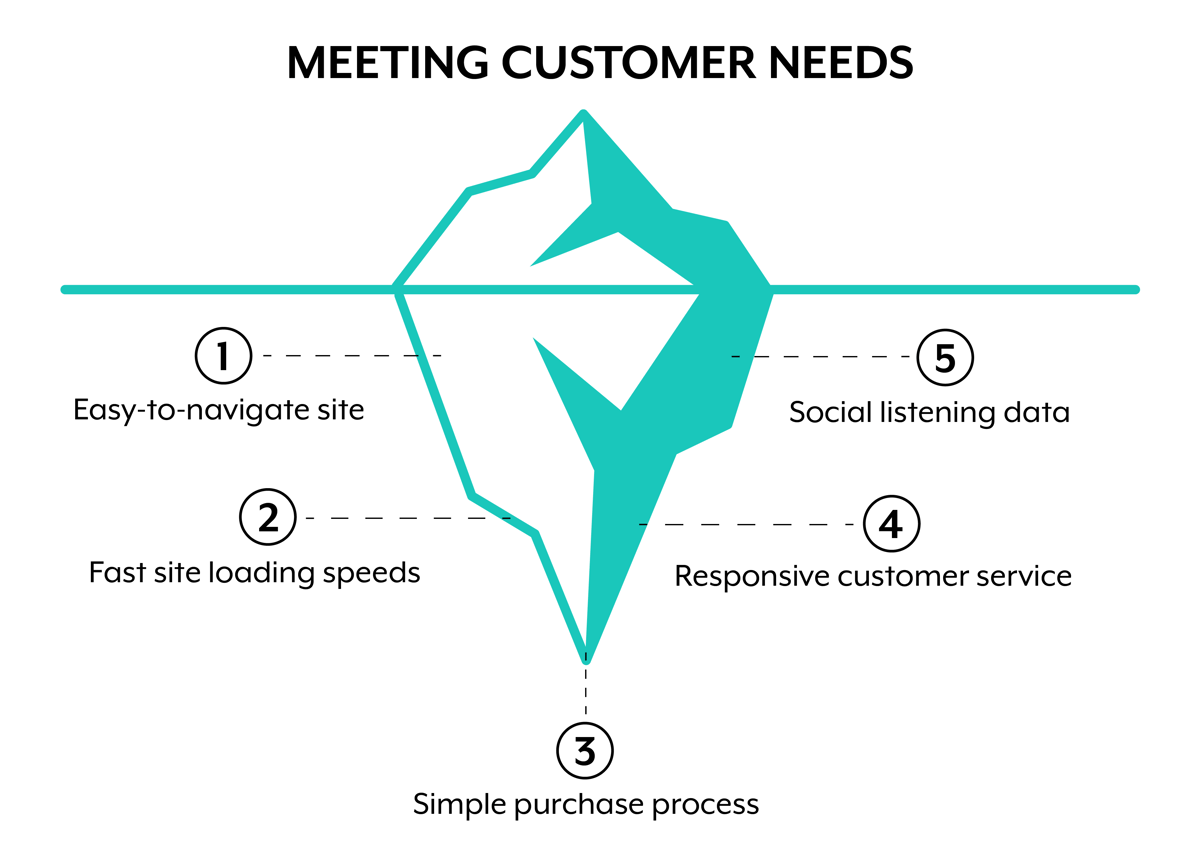Is your company a data-driven organization? Are data and analytics a consistent, key part of your company’s development?
If you answered “no” or “not really”, this guide is for you! After reading, you will understand why data matters, how it plays a crucial role, and how to implement a data-driven culture—particularly for organizations in an emerging industry.
The fact is, seeing your data is seeing the truth. To become data-driven, you must be prepared to confront brutal facts about your processes, your past and present efforts, and where you went right or wrong.
What does it mean to be a data-driven organization?
Being data-driven means that you, your teams, and entire departments within your organization make decisions based on factual information rather than assumptions or observations alone. You back up your ideas with evidence. It seems simple, but for many companies, this is not the universal basis of making decisions.
Think about your customers’ journey for a moment. If you knew how to give them the best experience and add the most value, wouldn’t that be a great guidance system? You’d know exactly what they buy, how they feel about the products, and how to continue providing them with the value they care about. Interacting with your organization suddenly becomes a frictionless customer journey.
This is one advantage data-driven companies and organizations have. Data and analytics are key to their progress and create pleasant experiences for their customers. Not surprisingly, McKinsey & Company suggests that data-driven organizations are 23 times more likely to acquire customers and 19 times more likely to be profitable.
Plus, data-backed decisions end up saving you time and money in the long run simply because you get rid of the guesswork.
To improve consumer relevance, consumer goods companies must make decisions that are centered around the consumer. This can be distilled down to five questions that all consumer goods companies must ask – “Who is the consumer?”, “Where is the consumer?”, “When is the consumer buying?”, “What does the consumer want to buy?”, and “Why is the consumer buying?”.
-Alison Kennedy, Managing Director – Accenture Strategy
Most companies will go off of their gut to make decisions, using personal or professional experiences and observations. In fact, the majority of companies who are “on top” feel like they don’t need data because they have gotten so far without it. But with so much at stake, you can’t count on your gut to keep your customers happy.
And emerging markets can be very unforgiving. One wrong marketing or product decision can create the opportunity for competition to swoop in at a much faster rate than more established markets.
Comprehensive data on hand allows you to really validate or invalidate your gut feelings, and then identify new opportunities that previous experiences would never conjure up. The answers you’re looking for when ideating your next steps, strategies, and processes, are all in your data. Data is an invaluable resource for your business or organization as you outsmart your competitors and address your customers’ needs.
“Efficiency is doing things right; effectiveness is doing the right things.”
-Peter Drucker, Management Consultant, Educator, and Author
What kinds of data help brands perform better?
Companies have so many data sources available to them. The challenge is leveraging the right data source(s) for the right objective. Here is a list of data sources you could leverage:
Any combination of the above provides a multi-source data approach. The tools you have on hand can offer a dynamic view of valuable information.
Third-Party Data vs. First-Party Data
Third-party data is any information collected by an entity that does not have a direct relationship with the consumer. This data is particularly helpful when brands want to develop stronger strategies and tactics with objective data. Third-party data is often aggregated en masse, so brands using this kind of data would have access to much more than what is in their own systems. Brightfield is a third-party data source.
First-party data is any information a company owns about its customers - created and collected through a direct relationship with them. Brands will have their own transaction data, customer reviews, and they may even do their own focus groups or surveys. First-party data is particularly helpful when brands want to make decisions about their customers. If they want to develop a new marketing or product strategy, first-party data can help but likely won’t give the full picture.
Do data-driven companies perform better?
The decision to become data-driven can seem an obvious one to make. But what benefits does a company see once they turn data and insights into action? Think about some of the big companies dominating the business landscape right now—Amazon, Google, Netflix, and Facebook. They are serious about their data and advanced data analytics capabilities.
But even for those that are not dominating their industry, a recent Forrester study reports “data-driven companies are 58% more likely to beat revenue goals than those who are not focused on data.”
Not using data can have consequences. HubSpot research indicates that “51% of customers will never do business with a company again after just one negative experience.” And with personalized messaging, marketing automation, and AI becoming more prevalent, customers have higher expectations. HubSpot also reported, “74% of people are likely to switch brands if they find the purchasing process too difficult.” This highlights how easy it is for someone to go to your competitors if the experience you provide is too difficult or inefficient. Companies that leverage data to make decisions have a much higher success rate and drive higher profit.
Meeting the basic needs of your customers is just the tip of the data-driven iceberg.
How do you become a data-driven organization?
Of course, being a data-driven company is easier said than done, and it isn’t always comfortable. But it ultimately helps you in the long run.
Moreover, there is no one-size-fits-all approach that works across the board. Some organizations on this path might choose to build a data team, while others implement it in their digital transformation strategy. Many will rely on third-party data and research providers (like us) so they can have an objective understanding of the latest trends.
According to MIT Sloan, “Startups and newer companies have an advantage as they’re able to build data into the framework of their organization,” and data literacy is a key factor when doing so. The more people within your company that have access to and can find meaning in the numbers, the better actionable insights you’ll collectively have. This is where culture becomes key to a data-driven business.
It is often a learned skill, yet data literacy becomes important for individuals or teams that rely on metrics to track their performance or make important decisions in their daily projects.
How do you create a data-driven culture?
The easy answer would be to organize a structure, empower employees with education, and just invest in the right tools. But it takes a bit more effort than that.
A recent Deloitte survey states, “Efforts such as implementing new tools and technologies, and even hiring specialized talent, on their own are not sufficient to drive the cultural changes needed to become insight-driven.” It turns out that collaboration and turning analytics into a team sport is key.
Here’s how you can determine what matters to your company and how data applies in these areas: Think about how product, sales, and marketing teams are being measured. Chances are that these teams already use some data in their decision-making process. Ask yourself these questions:
-
What does success mean across different departments and where does data play a role?
-
How does data help to accomplish your own goals?
-
If you don’t have benchmarks in place, how can you begin to set them up?
These preliminary steps give a sense of where your organization already stands with data and where you can incorporate from there.
Many leaders assume that having a dedicated data team, rather than allowing access across organizational lines, is more effective. However, diffusing responsibility yields better results and allows each team to be fully empowered in their decision-making process. According to O’Reilly Media, “To succeed at becoming a data-driven organization, your employees should always use data to start, continue, or conclude every single business decision, no matter how major or minor.”
However, if the top decision-makers at a company or organization don’t want to be data-driven, there’s not much you can do to change that on your own. Buy-in from your CEO is important.
Without it, it’s nearly impossible to achieve a data-driven culture successfully.
How to sell your CEO on being data-driven
Logically speaking, anyone within an organization can catalyze the shift to a data-driven culture. A product manager can choose to create an A/B testing system for her team to experiment with for future product developments. This is a step in the right direction. But having a top executive advocating for a shift this crucial will increase the chances of a successful cultural transition. The budget, a strategic vision, and future company goals can all be addressed and paint a full picture of where data plays its role company-wide.
If you think you’ll have trouble getting executive alignment, showcase how it can help with investors. Your CEO likely leans heavily on data when it’s time to validate business decisions to investors. Leverage this scenario to have a conversation about data as it is front and center.
Why is it hard to become a data-driven organization?
Aside from your CEO’s buy-in, objections to data may come from a lack of time and resources. If your organization already has a team of people who are the sole data gatekeepers, they might argue security and compliance issues if everyone accessed the data. These are valid issues, but as the O’Reilly article explains, “Today, technologies that tie user identity to access control policies as well as technologies that capture audit logs can easily address such objections.” Data should be treated as an organizational asset rather than siloed.
There are also cases where leadership harbors resistance to change, an unwillingness to use technology, or fear of failure. Again, this can tie back to seeing the truths accompanied by a sense of defensiveness if the numbers don’t align with gut instincts. Becoming a data-driven organization is complicated, and it certainly doesn’t happen overnight. But organizations consistently have to change, and as hard as change may be, a failing company is much worse. Once a company culture becomes data-driven, it will be a continuous, gradual process.

Why is a data-driven culture important in emerging industries?
Forward-looking data can be extremely useful with emerging markets. As your industry grows, it’s easy to get overzealous. You can’t be at all places at once, so leaning on your data is important to stay on track, leverage steady and long-term growth, and successfully measure your efforts.
As new industries emerge, the traditional data sources that would help inform decisions may not be available. This was true in both cannabis and CBD where reliable point-of-sale data was hard to come by. At Brightfield, we strongly believe that multi-source data is the key to unlocking robust insights for emerging trends. As these markets develop, more data sources become available and should be leveraged all at once to get the best understanding of what's to come.
Forward-looking and historical data both have their place. If you’re trying to be more strategic as an organization, make sure that you’re measuring the performance of your strategy with forward-looking data on an ongoing basis.
Examples of organizations in emerging industries making data-driven decisions
There are dozens, if not hundreds of examples of brands using data to make better marketing and product decisions. Some saw huge success, while others may have not had the full picture or were too late to market.
Here are a few companies that have successfully leveraged data to make stronger business decisions.
Recess uses wellness insights to drive new product development
Recess, best known for its hemp-infused sparkling waters and brand ability to “capture a mood”, is diving further into the relaxation need state. Recess’ customers look to achieve a sense of calm and relaxation so the brand wanted to ensure they meet those needs at any time of day.
Their experience with functional ingredients like adaptogens led them to discover magnesium as another ingredient to promote relaxation. Using the Evergi platform, they deepened their understanding of the current magnesium consumer and found a clear opportunity to reposition the ingredient for a new market. Magnesium consumers skew much older to Recess’ core consumer base and the products are traditionally in capsule form.
|
Curious about Recess’ data-driven decision to expand its product lines? Read How Recess Expanded their Product Line. |
Brightfield engrains data into its day-to-day
Yes, we included ourselves on this list. We're a research company and we collect a lot of data for our clients. Our teams are constantly working with data and identifying better ways to collect, integrate, and visualize it. And because we specialize in emerging markets, data helps us find what to prioritize as things will change quickly!
But just because data is foundational to what we do, that does not inherently mean we are a data-driven company.
What makes us a data-driven company is how we view and use data to improve our systems and products. Anything from marketing and sales data to product analytics, or even an enlightening conversation with a client can give us some insight into how we can make our offerings stronger.
One of Brightfield’s core values is knocking down organizational silos and helping our teams work together more efficiently and effectively. Data helps us do that! We glean insights daily from Slack Analytics and internal surveys to help us identify any points of friction with collaboration





